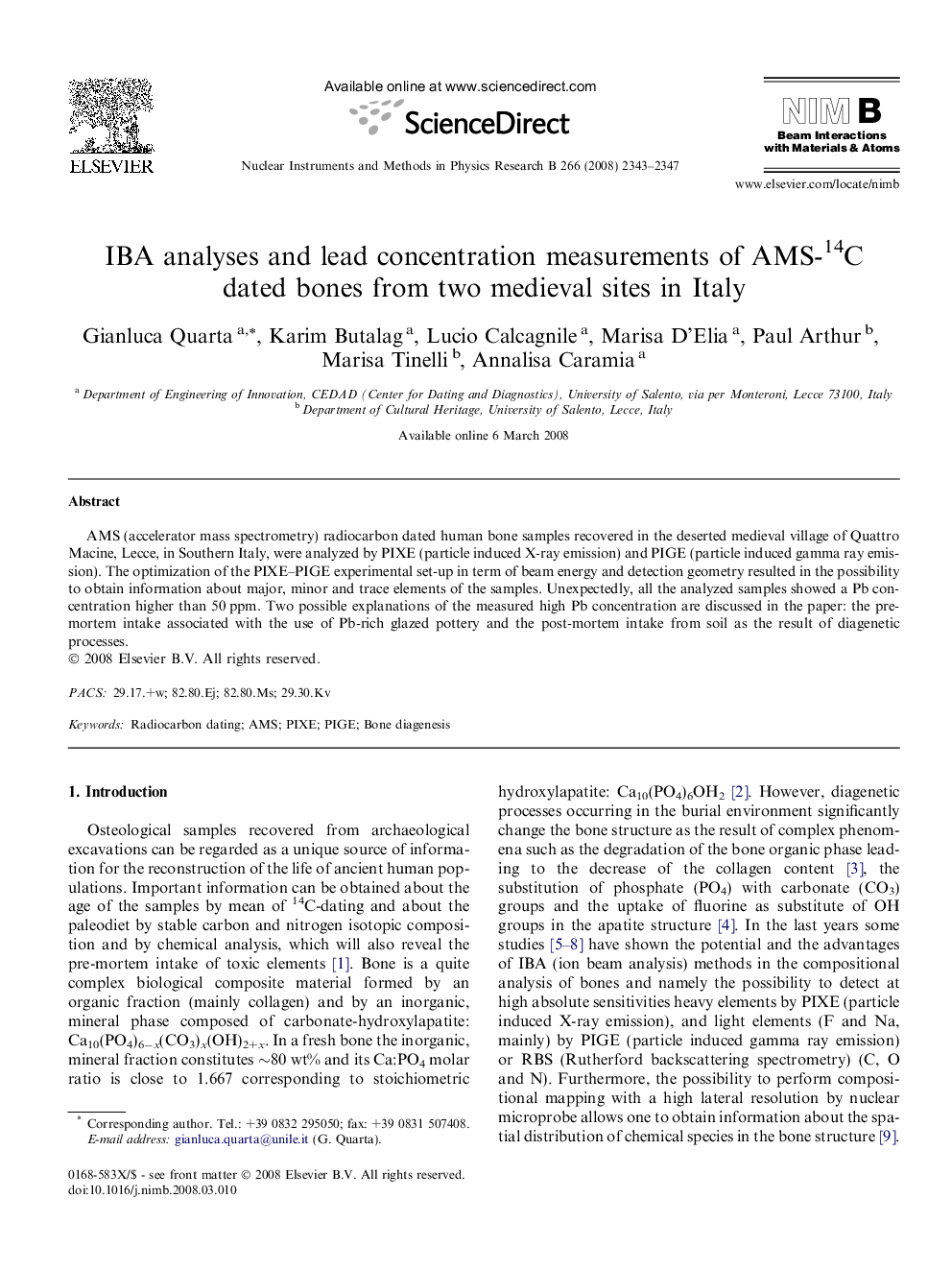| Article ID | Journal | Published Year | Pages | File Type |
|---|---|---|---|---|
| 1687606 | Nuclear Instruments and Methods in Physics Research Section B: Beam Interactions with Materials and Atoms | 2008 | 5 Pages |
AMS (accelerator mass spectrometry) radiocarbon dated human bone samples recovered in the deserted medieval village of Quattro Macine, Lecce, in Southern Italy, were analyzed by PIXE (particle induced X-ray emission) and PIGE (particle induced gamma ray emission). The optimization of the PIXE–PIGE experimental set-up in term of beam energy and detection geometry resulted in the possibility to obtain information about major, minor and trace elements of the samples. Unexpectedly, all the analyzed samples showed a Pb concentration higher than 50 ppm. Two possible explanations of the measured high Pb concentration are discussed in the paper: the pre-mortem intake associated with the use of Pb-rich glazed pottery and the post-mortem intake from soil as the result of diagenetic processes.
